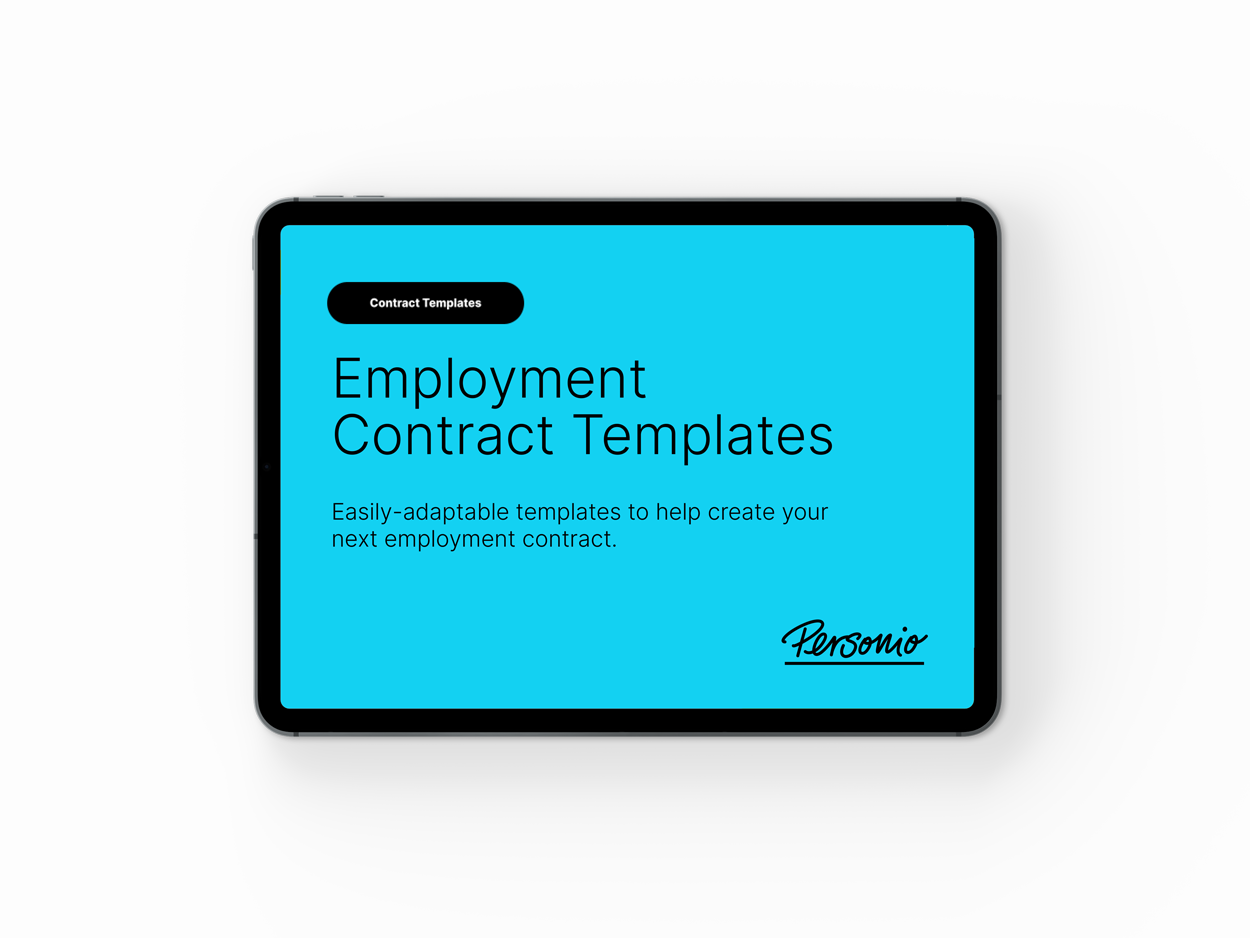A guide to TUPE: What it is and how it may apply to you
TUPE, or the Transfer of Undertakings (Protection of Employment) regulations, protects employees' rights during business transfers and ensures that their terms and conditions of employment remain intact.
Understanding and complying with TUPE guidelines is essential if your company is merging with another and you’re tasked with ensuring a smooth transition for your team.
This guide explains TUPE and how it may apply to your organisation, plus outlines seven key steps to ensuring a smooth and compliant TUPE transfer. Here’s how to approach TUPE with confidence.
What is TUPE?
TUPE regulations are a set of laws designed to protect employee’s rights when the business they work for changes hands.
These laws ensure employees retain their terms and conditions of employment when they transfer to a new employer due to a business transfer or service provision change. They also protect employees from unfair and unjustified treatment during periods of organisational change.
Note that for TUPE to apply, the part of the organisation that’s transferring to the new company must be in the UK.
Which types of transfers are protected under TUPE?
There are two primary types of transfers covered under TUPE:
Business transfers are when a business or part of it moves from one employer to another. An example is a merger, where two companies combine to form a new entity. For a transfer to be protected under TUPE, the employer's identity must change. This means that the existing team’s employment contracts transfer to the new employer and business, ensuring continuity of employment terms and conditions.
Service provision changes refer to situations where a service previously provided in-house (such as catering) is outsourced to a contractor. This also applies when an existing contract ends and is awarded to a new contractor or when a contract ends and the work is brought back in-house by the former customer.
However, employees aren’t protected under TUPE if the contract involves providing equipment for the company's operations (e.g. an office switching its IT hardware supplier) or for a one-time project (e.g. an event management company hired for an annual conference). TUPE only protects employees who provide the service being transferred on an ongoing basis.
When does TUPE apply to you?
As an HR manager, you need to understand when TUPE regulations apply to ensure compliance and protect your employees. As mentioned, TUPE applies during business transfers and service provision changes, where the identity of the employer changes or when services are outsourced or taken in-house.
If you’re the former employer
As the previous employer, TUPE impacts you in several ways.
Employees who are transferring to the new employer: You must preserve these employees’ terms and conditions of employment and transfer their employment to the new employer intact.
Other employees whose work may be affected by the transfer: Even employees who are not directly transferring may be impacted by the changes, so their rights must be considered during this process.
If you’re the new employer
As the new employer, you have specific responsibilities under TUPE.
Employees who are transferring to your organisation: You must honour the existing terms and conditions of employment for these employees, ensuring a seamless transition.
Existing employees whose work may be affected by the transfer: The changes brought by the transfer can impact your current workforce, and you must manage these changes carefully to maintain compliance and workforce morale.
7 steps for a smooth and compliant TUPE transfer
Implementing a smooth and compliant TUPE transfer takes careful planning. Here are seven steps to follow to adhere to regulations and maintain employee satisfaction.
1. Consult with employee representatives and trade unions
Before the transfer starts, you need to consult with employee representatives and trade unions. This step is mandated by law and helps address employees' concerns about the upcoming changes.
During these meetings, provide staff with detailed information about the transfer, including timelines and reasons. Then, discuss any anticipated changes and gather feedback to address concerns proactively.
Consider involving an Employer of Record (EOR) – an organisation that handles employment matters like compliance and legal responsibilities on behalf of the employer – if you feel like you need additional support for making a smooth and compliant transition.
2. Determine which employees will be transferring
The next critical step involves identifying the employees who will be part of the transfer. Begin by listing employees directly involved in the service or business unit being transferred. Then, identify other affected employees who might be impacted by the transfer and include them in the planning process.
For example, imagine a company that provides IT support services to clients. This company decides to outsource its help desk operations to another company. Help desk technicians and managers would directly form part of the transfer, while the IT support team and administrative staff would be indirectly impacted.
3. Confirm employees have the right to work in the UK
Remember, TUPE applies to employees of businesses in the UK. So, ensuring that all transferring employees have the legal right to work in the UK is essential to avoid legal complications.
Review and verify the right-to-work documentation for all transferring employees, and keep copies of relevant documentation for compliance records.
4. Minimise the impact of redundancies
If redundancies are necessary due to the transfer, take care to manage them in a way that minimises the impact on employees and complies with legal requirements.
Conduct a thorough review to determine if redundancies are necessary. Then, follow legal procedures for redundancies, including fair selection processes and consultations. During the process, offer support and outplacement services to affected team members.
5. Ensure any employee contract changes are compliant
Any changes to an employment contract due to the transfer must comply with TUPE regulations. This means maintaining existing terms and conditions unless changes are previously agreed upon by all parties.
So be proactive when consulting with employees and their representatives about any proposed changes. Remember to always document any agreed-upon changes and ensure they are implemented correctly.
6. Prepare briefing materials for transferring employees
Provide clear and comprehensive information to transferring employees to keep everyone happy and comfortable throughout the transfer process. That means developing detailed briefing materials that cover all aspects of the transfer, including the process, any changes to employment terms and support available to staff.
It’s a good idea to hold briefing sessions to explain the materials and answer employees' questions. And keep communication clear and consistent so staff are informed throughout the process.
7. Be transparent with staff and customers
Transparency helps you maintain trust and morale during a TUPE transfer. This involves clear communication with both staff and customers about the changes and what they can expect.
So always communicate openly with employees about the reasons for the transfer and its implications. And don’t forget about your customers; keep them informed about the changes and reassure them about the continuity of service.
Regular updates to all impacted parties, both internal and external, can help to manage expectations and mitigate concerns.
Stay compliant in all employee matters
Navigating a TUPE transfer can be complex, but following the steps outlined in this guide ensures a smooth and compliant process. It’s important to carefully work through each step, from consulting employee representatives to maintaining transparency throughout the process.
Each of these steps will help protect your employees’ rights and maintain organisational stability during the transfer.
At Personio, we understand the challenges HR teams face during transitions and organisational changes like these. Our comprehensive HR solution centralises your HR processes, from employee management to compliance tracking. Using our platform, you can ensure that all aspects of your HR operations run smoothly and comply with regulations like TUPE.
Expert guidance on essential HR processes

Learn about critical topics like labour law, data privacy and human resources management.
HR Knowledge HubFrequently asked questions about TUPE
How do you define TUPE?
TUPE is a UK employment law designed to protect employees' rights when their existing company transfers to a new employer. TUPE applies to business takeovers, mergers and outsourcing situations. It safeguards employees from unfair treatment and ensures continuity of employment despite changes in ownership or management.
Who is eligible for TUPE?
TUPE regulations apply to employees who are part of a business transfer or service provision change. To be eligible, employees must be assigned to part of the business or service that is being transferred. This includes full-time, part-time and fixed-term employees whose work is directly related to the activities being transferred.
TUPE also covers employees with varying employment statuses as long as they are legally classified as employees with the right to work in the UK. Workers who are only contracted for short-term tasks or supply goods and materials are not eligible for TUPE regulation.
What is the 50% rule for TUPE?
The 50% rule in TUPE refers to a guideline used to determine whether a service provision change falls under TUPE regulations. If the majority (more than 50%) of an employee’s work is dedicated to the service or business being transferred, they are likely covered by TUPE.
This means their existing employment rights and conditions should transfer to the new employer. The 50% rule helps identify which employees are eligible for protection under TUPE during outsourcing, insourcing or employment contract changes.
Disclaimer
We would like to inform you that the contents of our website (including any legal contributions) are for non-binding informational purposes only and does not in any way constitute legal advice. The content of this information cannot and is not intended to replace individual and binding legal advice from e.g. a lawyer that addresses your specific situation. In this respect, all information provided is without guarantee of correctness, completeness and up-to-dateness.


